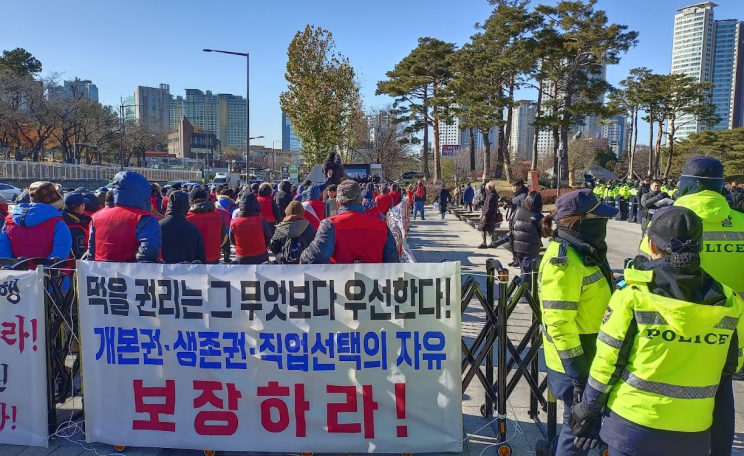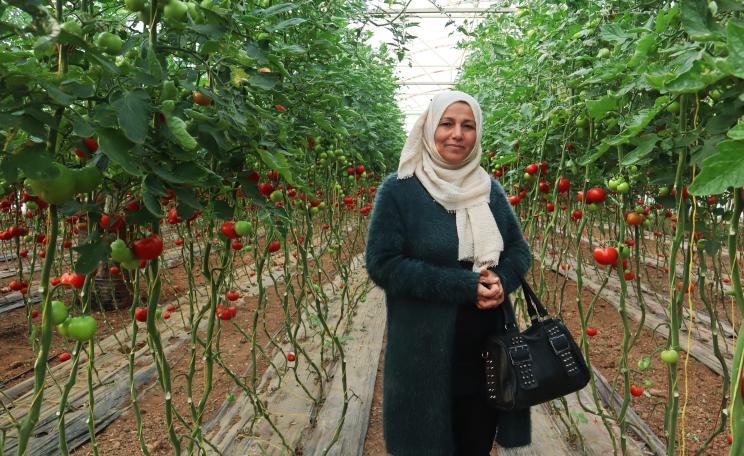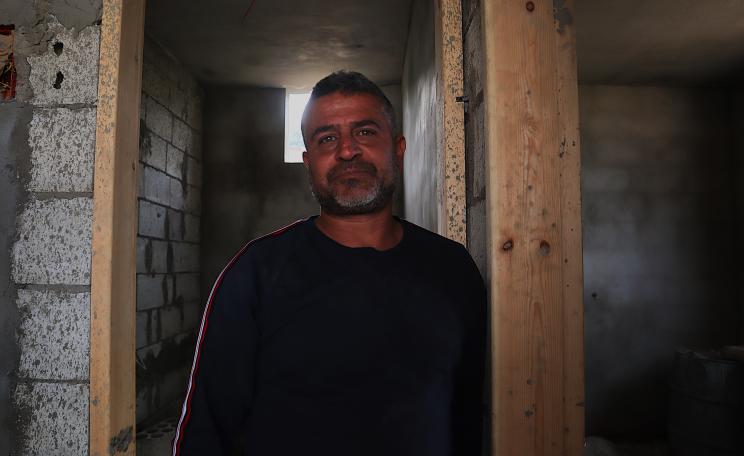There were olive trees everywhere. They were over 2,000 years old. But with no electricity, fuel, or wood to heat our homes, we started cutting them down.
The environment paid a heavy price during the civil war that raged for more than a decade in Syria, claiming more than half a million lives and forcing half of the population into exile or displacement.
Farmers are striving to regain a semblance of life and restore their crops in a precarious socio-economic context, amid ravaged lands and widespread destruction. The fall of Bashar al-Assad's regime in December 2024 has given hope, but Syrians now have to recon with its legacy, including the estimated one thousand people killed in massacres along the coast.
This article has been published through the Ecologist Writers' Fund. We ask readers for donations to pay some authors £250 for their work. Please make a donation now. You can learn more about the fund, and make an application, on our website.
On the road from Damascus to Douma, in Eastern Ghouta, ruins stretch as far as the eye can see. Ghouta, in Arabic, means oasis. Once, a green belt surrounded the Syrian capital.
Scars
Most of the region’s fruits and vegetables were grown there. Over the years, however, rapid urbanization turned this landscape into concrete. And the impact of the heavy bombardements during the war left blooding scars in this earth.
The Assad dictatorship started in 1970 when Hafez Al-Assad, Bachar’s father, took over the power. At his death, his son, Bachar become the new president. In 2011, a peaceful revolution erupted in the country.
The brutal repression by Bashar al-Assad’s regime soon turned it into a bloodbath. In the name of maintaining order, thousands of Syrians were sacrificed—along with their lands and natural resources.
On Synday, 8 December 2024, different offensives led by rebels groups put an end to this regime.
A side road veers off the highway, leading deeper into the countryside. The ruins multiply. The city of Douma looms in the distance, bearing the scars of Syria’s civil war.
Survival
Here, the full weight of Assad’s brutal regime came crashing down: first through the violent repression of protests, then through a siege between 2012 and 2018, during which a double sarin gas attack in 2013 killed between 1,400 and 2,000 people, according to multiple estimates.
In the cold morning mist of winter, a field stretches across several hectares, nestled between the ruins of shattered residential buildings. Issa Mustafa Al-Masri, 55, watches over his winter crops—cabbages and fava beans.
A cow and her calf, tied at the field’s edge, graze on the sparse grass. A few olive trees stand against the biting wind.
“Before, there were olive trees everywhere. They were wide and over 2,000 years old. But [during the siege] with no electricity, fuel, or wood to heat our homes, we started cutting them down and burning them,” says the sun-weathered farmer.
There were olive trees everywhere. They were over 2,000 years old. But with no electricity, fuel, or wood to heat our homes, we started cutting them down.
Cut off from the outside world, the people of this region adopted survival strategies - chopping wood to heat their homes and cook was one of them.
Seeds
In a 2023 report, the NGO Pax noted: “The region has lost about 80 per cent of its trees due to fires caused by bombing campaigns and the lack of water.”
The loss of vegetation and green spaces, combined with the expansion of built-up areas during the war years, has already been linked to an increase in urban temperatures by 2°C to 5°C in Damascus and Aleppo further north, according to the organisation.
Issa Mustafa Al-Masri rents this plot of land and lives here with his family. From 2012 onward, for seven years, they endured regime bombardments, taking shelter in the basements of buildings just a few hundred meters from their fields.
“There were airstrikes. We couldn’t reach our land,” he recalls, sitting in the family’s modest living room. His wife, Amira, adds: “We couldn’t even cross the street from our house.” The family once owned 200 sheep—all of which perished during the war.
In Douma, life has resumed amid the ruins. The residents remain haunted by the deadly attacks, especially the chemical ones. As we head southwest, a group of men gathers at the entrance of a barren field. Soon, seeds will be sown for summer crops.
Turmoil
“The Ghouta region was named after the abundance of water and rivers that once ran through it,” explains Mohammad Fatoum, a local farmer. “But the war has turned the land barren.”
The Barada River, one of the region’s major waterways, is now heavily polluted with waste and sewage, according to residents and experts. To avoid using this contaminated water, farmers have dug a well. A diesel-powered pump—when fuel is available—draws water to the surface.
Syria’s decade-long conflict has ravaged its natural landscape, observes independent environmental journalist Peter Schwartzstein. “Almost no part of the environment has escaped the negative effects of hostilities.
Schwartzstein, a researcher at the Wilson Center think tank in the US, adds that water and air pollution have also worsened due to poor governance and the survival strategies of the population.
"Agriculture, for instance, has been caught in the turmoil of violence while also suffering from neglect and unsustainable farming practices that many Syrians had no choice but to adopt during the war.”
Harvest
A small stream, clogged with waste, trickles from the field. Despite the winter season, only a thin flow of water runs through it. “The main water sources that once existed in Ghouta were cut off during the war to dry out the region,” continues Mohammad Fatoum, surrounded by other farmers.
As airstrikes and bombings intensified, access to farmland dwindled. “During the war, we started using small plots to grow vegetables, wheat, barley, and other crops for daily consumption,” the farmer explains.
But the relentless bombings prevented crops from growing, leading to widespread starvation and the deaths of many civilians, including children who succumbed to cold and hunger.
To reach Eastern Ghouta from its western counterpart, one must return to the highway and drive through yet more war-ravaged landscapes. Near the city of Daraya, a former opposition stronghold, fields stretch for miles.
Agricultural workers sit under a makeshift shelter, sorting leeks—the day’s harvest. Omar Abu Hawa, the landowner, inherited the farm from his family, who have cultivated it for generations. As a child, the 50-year-old would walk beneath rows of fruit trees—apricots, walnuts, apples.
Replant
“You couldn’t even see the sun,” he says, pointing toward the now-barren road that once ran alongside his farm. “Regime soldiers cut down the trees and sold them as firewood to the residents.”
He left his hometown at the outbreak of the civil war, moving north before returning in 2018 after a peace agreement between rebel groups and the Assad regime. “When we came back, nothing would grow because of the chemical attacks. It was very difficult,” he recalls, standing among bombed-out houses.
Professor Miassar Alhassan, of the University of Leeds, is an air and soil pollution expert. He explains that research on the effects of chemical weapons on the environment is scarce.
“The regime has obstructed most attempts to conduct such studies, tampering with sites and delaying expert access for long periods. This also applies to new Russian munitions tested in Syria, whose nature remains unknown,” he told The Ecologist. The most pressing concern is pollution from heavy metals.
When Omar Abu Hawa returned in 2019, he had his land inspected for mines by an engineer. “Now, I want to replant vineyards—we had them before,” he says.
Cultivate
Daraya was once famous for its vineyards, earning the nickname “the city of blood-stained grapes” during the revolution. More than 700 people were killed in this opposition stronghold during a brutal offensive by Assad’s forces in August 2012.
“In western Daraya, there were vast agricultural lands. But today, many have been lost due to the ongoing hardships,” confirms Hussam Al Aham, a member of Daraya’s municipality, who also worries about the state of water resources.
For many experts, the environment—already neglected before the war—became one of the regime’s strategic targets during the conflict.
“It will take at least a century to restore our environment,” concludes Miassar Alhassan. “Authorities must allocate resources to essential services like electricity, water, and job opportunities while supporting agriculture, reforestation, and waste management across all governorates without discrimination. This approach will foster unity and encourage peaceful coexistence.”
For both peace and the environment, nothing will happen without international support and systemic change, experts argue. In Douma and Daraya, farmers are working to restore their land amid the devastation, hoping that lasting peace will allow their children to help cultivate it far from bombs and massacres.
This Author
Amélie David is a freelance journalist based in Lebanon covering environmental and climate change stories. This article has been published through the Ecologist Writers' Fund. We ask readers for donations to pay some authors £250 for their work. Please make a donation now. You can learn more about the fund, and make an application, on our website.







